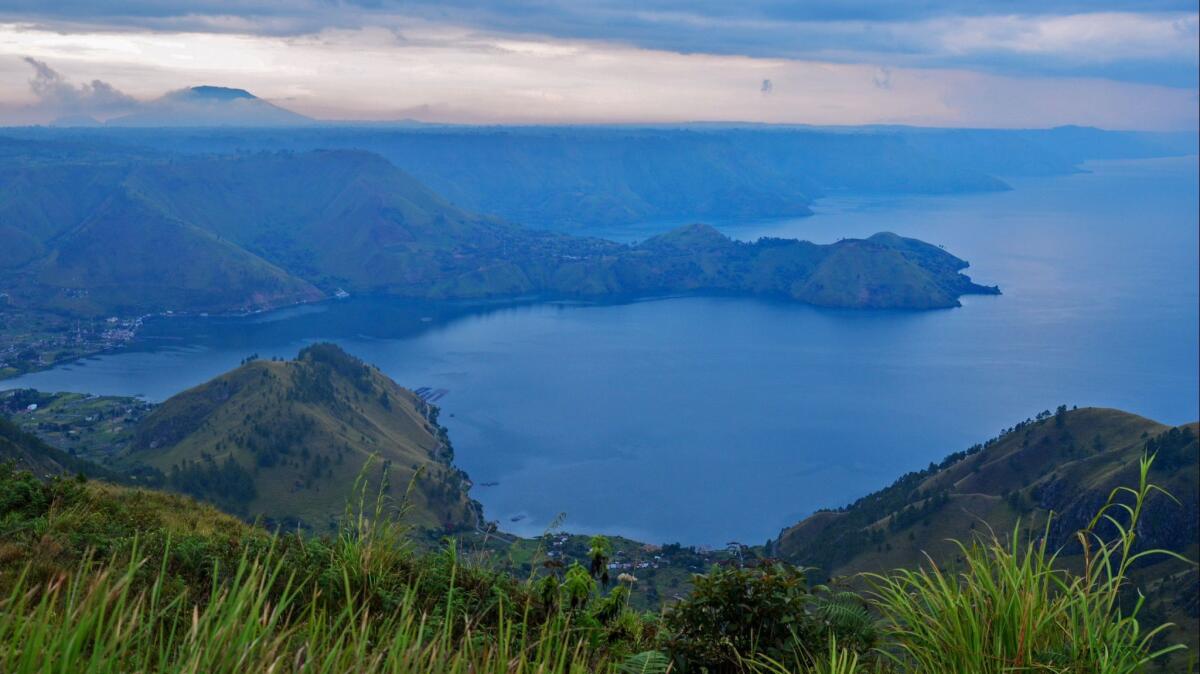In Asia, traveling cheaply and comfortably are not mutually exclusive. Here’s how

For years, I thought international travel was an out-of-reach luxury, like owning cashmere long johns: something I coveted but simply couldn’t justify wasting money on. Then my husband, Jeff, and I updated our passports, dug out our old backpacks and headed to Cambodia and Vietnam using 20 years’ worth of credit card points.
That trip was our gateway drug. We have been back to Asia many times. Although we’re decades from traditional backpacker age, we’re convinced it’s the best way to see that region. Besides, why should younger backpackers have all the fun? With an open mind and semi-closed wallet, traveling in Southeast Asia can be comfortable — and an adventure for those of us with more than a few gray hairs.
Touring the world with a backpack in later adulthood isn’t a secret. Jeff and I encountered few Americans, but we met dozens of Australians and Europeans in their 50s, 60s and 70s who were traveling the way we were. If you haven’t done it, you may think budget travel means sleeping next to gap-year kids, tossing down shots of Mekong whiskey. This wasn’t the case. We slept comfortably and enjoyed inexpensive transportation, meals and culture.
A baseball trip through Japan is just what a jaded MLB fan needed »
Getting around is usually easy. We often bought bus and train tickets at the stations, where destinations usually are marked in English as well as the language of the country. Occasionally, we spent a little more and obtained tickets online or through a travel agent because the stations in large urban areas could be overwhelming.
An eight-hour train trip from Ninh Binh to Dong Hoi was one of the highlights of a Vietnam trip, thanks to karst mountains and rice paddies, all admired from our comfortable assigned seats.
We loved getting to meet our fellow passengers, who could invite us for coffee. Men seemed especially interested in practicing their English and taking photos with Jeff.
Sometimes we hired a car to get from city to city. That cost about what we might pay for a dinner for two at home. For instance, a trip from Dong Hoi to Hue in Vietnam, a 105-mile excursion that included stops to visit the Vinh Moc tunnels in Quang Tri and the DMZ bridge, cost $70.
Carrying a backpack made taking any transportation — buses, cars, boats, trains and once, a giant tricycle — a breeze. We pack only a week’s worth of clothing because laundry is generally a bargain. In the morning, we dropped off dirty clothes next to our Bangkok hotel and they were not only washed but ironed by evening. Total bill: less than $5. Our hotel in Siem Reap, Cambodia, washed an outfit for free each night we stayed.
When an acquaintance said she could never afford to travel extensively, I recalled she had traveled to a Disney World resort and to New York City. But it’s cheaper to fly to many Asian destinations and travel for three weeks, especially during the off season, than it is to stay even at one of the less-expensive Disney Resorts or a New York City budget hotel for a week.
That’s not to say these aren’t terrific destinations — they’re just different types of trips. And at this point in our lives, we would rather see the wide world than the wide world of Disney.
Our Southeast Asian destinations offered us far more bang for our baht. For example, we spent four nights at a comfortable spa outside Chiang Mai, Thailand, for $15 a night. We found it through Agoda, a popular online booking site in Asia.
In Vietnam, Cambodia, Laos and Thailand, we spent $20 to $50 a night for a clean air-conditioned room with a private bathroom, and that usually included breakfast. In Ubud, Bali, in the off season, we found a beautiful room with a pool for $30 a night. Other places in Indonesia were less expensive. in Sumatra, we spent $11 for a room overlooking Lake Toba, a freshwater lake in the caldera of a supervolcano.
At this Beijing hotel, guests learn the art of shadow puppetry »
Food is one of the many pleasures of traveling in this region. We ate at basic restaurants, where we enjoyed noodles such as mie goreng or rice dishes such as khao man gai for about a dollar.
Although language was occasionally an issue, eating well was not. Smaller places typically sell only a few items, so pointing is easy, and larger restaurants often have photo-driven menus. We always looked for crowds and then joined them, knowing that was a promising sign. I never got sick from street food but I did after a buffet in a fancy Ho Chi Minh City hotel. (We travel with antibiotics.) We dine well and safely for about $10 a night for two and frequently less.
Cultural events are usually reasonable. Some treasures are pricey (Angkor Wat in Cambodia costs about $40 a person for a one-day admission), but a night of Khmer dance from Cambodian Living Arts, an organization dedicated to reviving dance, cost $15 per person. Admission to the War Remnants Museum in Ho Chi Minh City was less than $2.
Phu Quoc is now a global destination. Is that a good thing? »
Traveling is a luxury but in many places in Southeast Asia it’s an affordable luxury. We’re already saving for our next trip.
More to Read
Sign up for The Wild
We’ll help you find the best places to hike, bike and run, as well as the perfect silent spots for meditation and yoga.
You may occasionally receive promotional content from the Los Angeles Times.






